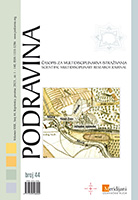- NIKOLA VII. ZRINSKI U AUTOGRAFU »PUTOPISA« EVLIJE ČELEBIJA
- PONOVNO PROMIŠLJANJE OBRANE NOVOG ZRINA
- RAKIČAN MANOR AS A MONUMENT OF PROMINENCE IN TIME AND SPACE
- EKONOMSKA STABILIZACIJA KAO ZAKLJUČAK JUGOSLAVENSKOG SOCIJALISTIČKOG PROJEKTA U STUDIJAMA SLUČAJA: INDUSTROGRADNJA I GK MEĐIMURJE 1980. – 1985.
- UPRAVLJANJE I RAZVOJ KARIJERA RADNO AKTIVNOG STANOVNIŠTVA GRADA KOPRIVNICE
- UTJECAJ PROMETNE DOSTUPNOSTI NA PROMJENU BROJA STANOVNIKA I STARENJE STANOVNIŠTVA U KOPRIVNIČKOKRIŽEVAČKOJ ŽUPANIJI OD 1961. DO 2021.
- THE EDUCATIONAL SITUATION OF THE DRÁVA REGION IN THE LIGHT OF DAILY PHYSICAL EDUCATION
- SJEĆANJE - ŠTO SAM RADILA KAO POVJESNIČARKA OD OSAMDESETE DO DEVEDESETE GODINE ŽIVOTA (2013. – 2023.)
- BIBLIOGRAFIJA MIRE KOLAR-DIMITRIJEVIĆ (2012. – 2023.) U POVODU 90 GODINA ŽIVOTA
- IN MEMORIAM MIJO LONČARIĆ (1941. – 2023.)
- PRIKAZI NOVIH KNJIGA, ČASOPISA I ZNANSTVENIH SKUPOVA
THE EDUCATIONAL SITUATION OF THE DRÁVA REGION IN THE LIGHT OF DAILY PHYSICAL EDUCATION
The Dráva region is one of the poorest areas in Hungary, and is no exception when it comes to education, either. Its social, economic and infrastructural disadvantages are beyond dispute. The region has primary and secondary schools, but there is a complete lack of higher education institutions granting a diploma. In our research, we have assessed sport, including the delivery system for daily physical education. We were interested in whether adequate infrastructure, physical and human resources of schools existed in the region. We mapped the gaps and suggested programmes that could be implemented to obtain support for sports equipment with a small investment of time and effort. We asked one PE teacher from each school to complete our online questionnaire based on our own questions (Google Form), consisting mostly of Likert-type and closed questions (a total of 39 questions). We were able to reach 68% of all schools in the area, which means that a total of 24 people completed our questionnaire (8 women, 16 men). Currently, participation in public education is compulsory up to the age of 16 in Hungary, which means that obtaining a secondary school leaving certificate is not obligatory, and the educational attainment of people in this region differs significantly from the national average. The solution to this problem would be to rethink the system of daily physical education, which would also boost education in this area from a sporting point of view; also, additional financial supports would help to raise the quality of education.
Pregledni rad / ReviewGergely MARTON

